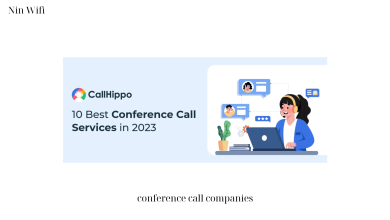Unlocking the Power: The Key to Enterprise Hybrid Cloud Strategy
It’s no secret that the cloud has become ubiquitous in the world of business, with more and more organizations moving their applications and data to cloud-based platforms. However, as the cloud landscape continues to evolve, many enterprises are faced with the challenge of creating a hybrid cloud strategy that can balance their unique business needs with the benefits of cloud-based solutions.
In this blog, we’ll explore the key to unlocking the power of enterprise hybrid cloud strategy and how it can help organizations achieve their goals in the digital age.
Understanding Enterprise Hybrid Cloud
Cloud computing that integrates both public and private clouds is known as hybrid cloud. Workloads will be switched between the public cloud and the private cloud using this hybrid cloud. This works well for many different types of business issues, and it is gradually taking the place of public clouds. Businesses have additional alternatives for data deployment because to hybrid clouds.
In order to host virtual machines (VMs) or containers, Hybrid Cloud uses a virtualization layer (Hypervisor). IT teams attach the Private Cloud software layer on the Hypervisor, enabling features like orchestration, automation, self-service, recovery, and compensation for the services rendered.
Architecture of Hybrid cloud
The level must meet the following requirements to set up a hybrid cloud:
- Infrastructure as a Service (IaaS), such as Amazon Web Services, Microsoft Azure, or Google Cloud Platform
- Private cloud architecture, which can be implemented either internally or through a private cloud service provider.
- And all that is required to connect the two environments is a wide area network (WAN) connection.
To access compute instances, storage resources, or other services like Big data analytics clusters or serverless computing capabilities, organizations typically choose the public cloud.
The architecture of the public cloud, however, is not directly under the authority of businesses. As a result, in order to be compatible with desired public clouds or cloud models for deployment, hybrid clouds must create their own private cloud environments. This necessitates the right configuration of the data center’s servers, storage, LAN, and load balancing, as well as the hard disk settings.
After that, the business will need to set up a virtualization layer or a hypervisor in order to build and maintain virtual machines (VMs) and, in some situations, information repositories.
The IT staff will then need to install a layer of private cloud software, such as OpenStack1, one of the top hypervisors for offering cloud characteristics like self-service – self-service, automation, orchestration, reliability, and robustness.
Users can often select from a list of local services provided by a private cloud architecture, such as compute instances or database instances.
The choice of hypervisors, virtual software, and cloud software layers that are compatible with the intended public cloud is the key to creating a successful hybrid cloud. makes guarantee that public cloud services and application programming interfaces (APIs) are properly interoperable.
The seamless exchange of versions between the private cloud and the public cloud is additionally made possible by the deployment of suitable software and services. A combination of resources and services on both private and public platforms can be used by developers to build sophisticated apps.

Advantages of Enterprise Hybrid Cloud
Heightened agility
Rapid transformation and adaptation are continual requirements for digital enterprises. As a result, Hybrid Cloud’s ability to integrate the best aspects of Public Cloud and Private Cloud will boost its marketability and competitiveness.
Applications for flexible data
By employing hybrid cloud, users can transfer data and apps across public and private clouds. As a result, data processing between clouds is more flexible, allowing organizations to respond swiftly to modifications in their business strategy, such as changes in items or market prices.
Low running expenses
More data can be stored by using hybrid cloud. Users have the option of storing critical data in a private cloud and less critical data in a public cloud. Users can save time and save operating expenses thanks to the efficient and straightforward storage process. Additionally, there are no up-front costs for users of hybrid clouds.
Quickly operating speed
Features of hybrid clouds are comparable to those of distributed computing and edge computing. The system’s important services may be easily identified in order to increase operational speed.
Unlimited scalability
The best of all worlds, public and private clouds, is hybrid cloud. With the aid of public cloud, businesses have unrestricted access. With Private Cloud, businesses can also freely grow their storage capacity.
Excellent dependability
Hybrid Cloud delivers applications and services across both on-premises data centers. By eliminating interruptions to work tasks, this helps firms lower their risk of mishaps.
Disadvantages of Enterprise Hybrid Cloud
A reliable network connection with good API compatibility is necessary for hybrid cloud. The Public Cloud provider must be contacted for all interactions on the Private Cloud.
Enterprises must have fallback procedures in place in case there are issues with connections. Improved interoperability with Public Cloud providers to prevent problems with service interruption.
In some circumstances, businesses must restructure and distribute volume. In order to limit the cost of using public cloud services, the API must then be attached.
To ensure the lowest latency, applying hybrid cloud requires a comprehensive examination of the connection speed and information-transmission optimization techniques.
Businesses require an IT team with a specific level of competence since Hybrid Cloud also necessitates the development and management of Private Cloud. When implementing databases, extension software can add complexity to the model by providing support systems and other tools.
Conclusion
In conclusion, implementing an enterprise hybrid cloud strategy can provide a multitude of benefits for businesses. It allows for greater flexibility, scalability, and cost-effectiveness, while also providing the ability to leverage both public and private cloud environments.
However, a successful hybrid cloud strategy requires careful planning and execution, as well as ongoing management and monitoring. With the right approach, businesses can unlock the full potential of their hybrid cloud infrastructure and drive innovation and growth in today’s rapidly evolving digital landscape.


